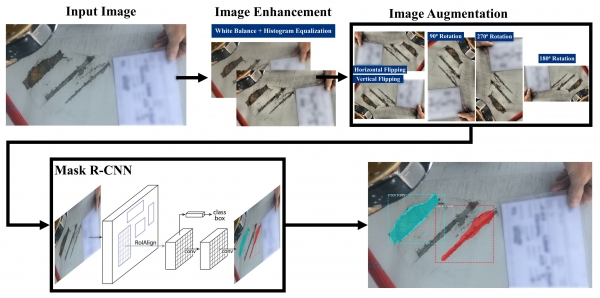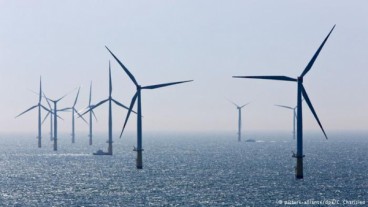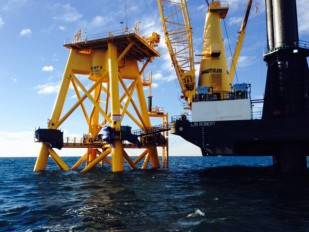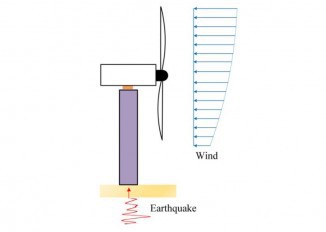Artificial Intelligence tool identifies wind turbines defects

Scientists have developed a new method based on Artificial Intelligence (AI) to detect defects in the blades of wind turbines.
The establishment of wind farms has been constantly growing during the past years as there is a need to harvest wind power so that people can be less dependent on fossil fuels. The number and the size of the wind turbines used to generate clean energy increases thus creating an urgent need to identify defective ones and conduct repair works.
Wind turbines may present several defects which are frequently associated with material damage during the manufacturing processes. The damage may not be initially detected but it can expand to a concerning degree when the blades of the turbines are subjected to complex dynamic loads during their operation.
Defects on wind turbines can impact their efficiency. Moreover, structural integrity issues may emerge if they are not adequately maintained. Nowadays, the inspection of the turbines is conducted via conventional techniques that include in-situ inspections and manual assessment of photographs. However, these methods are time-consuming and are also affected by other factors (e.g., lighting, subjectivity) and, therefore, do not always provide the optimum results. Other techniques such as ultrasound or visual thermography have also not proved to be adequate.
A team from the Loughborough University in the UK has recently introduced a new method that utilizes AI to detect the defects of the turbines via photographic analysis. The new tool utilizes the Mask R-CNN algorithm which is developed for image segmentation processes and it can detect erosion, cracks, voids or other defects in the turbines. Mask R-CNN is fed by images or videos captured either via in-situ inspection or via drone missions. The tool has been trained by a set of more than 900 images.
After the training, the AI tool was tested via a new set of images (223) where the defects of the turbines were already detected. The tool managed to recognize 85% of the defects proving its efficiency. Nevertheless, the team is aiming at further increasing the accuracy of the tool by improving the algorithm and by better pre-processing the images retrieved in-situ. Scientists admit that such AI-based tools are still underdeveloped and huge ameliorations will soon emerge. “AI is a powerful tool for defect detection and analysis, whether the defects are on wind turbine blades or other surfaces. Using AI, we can automate the process of identifying and assessing damages, making better use of experts’ time and efforts," Dr. Georgina Cosma, co-author of the study and a Senior Lecturer at the Loughborough University, stated.
Sources: LoughboroughUniversity Zhang et al. (2021)
Sources: LoughboroughUniversity, Zhang et al. (2021)
Want to read more like this story?

80-meter wind turbine collapses in Northern Ireland
Jan, 14, 2015 | NewsA massive wind turbine has mysteriously collapsed on January 2nd, on Murley mountain in Northern Ire...

Wind Turbines and Energy Efficiency
Aug, 31, 2015 | NewsThe recalculations of the Max Planck Institute for Biogeochemistry show that more wind turbines don&...

Wind Turbines On Bridges
Aug, 07, 2015 | NewsPhotovoltaic systems have the advantage of flexibility, since they can be installed in various place...

Groundbreaking wind power project: Bladeless turbines
Mar, 24, 2021 | NewsA pioneering design introduces bladeless wind turbines for the production of clean energy. Wind p...

The first offshore wind farm in the US will become operational by the end of 2016
Aug, 16, 2016 | NewsThe project is called Block Island Wind Farm and will supply electric power to 17,000 households...

Dynamic response of wind turbines under combined wind-earthquake loading
Sep, 10, 2021 | NewsA new study investigates the combined effect of wind and earthquake forces to assess the dynamic be...

A wind-turbine without blades!
Mar, 18, 2016 | NewsIt is called Vortex and features reduced operating costs and low environmental impact It is calle...

Small and elegant wind turbine trees generate energy in urban environments
Oct, 01, 2016 | NewsA French company aspires to change the established perception of ugly and noisy wind generators A...

Final turbine installed in Normandy’s first offshore wind farm
Mar, 25, 2024 | NewsThe final wind turbine was installed on Monday, March 25, at the Fécamp offshore wind farm in Franc...
Trending

Vertical gardens in Mexico City to combat pollution

Saudi Park Closed After 360 Big Pendulum Ride Crashes to Ground, 23 injured

Characteristics of Load Bearing Masonry Construction

Taipei 101’s impressive tuned mass damper

Dutch greenhouses have revolutionized modern farming

Federal court rules Biden’s offshore drilling ban unlawful


